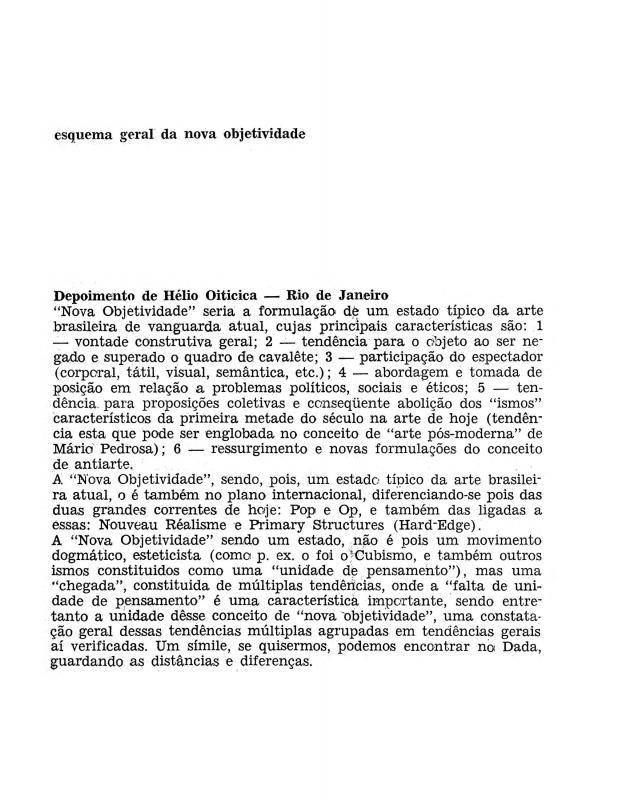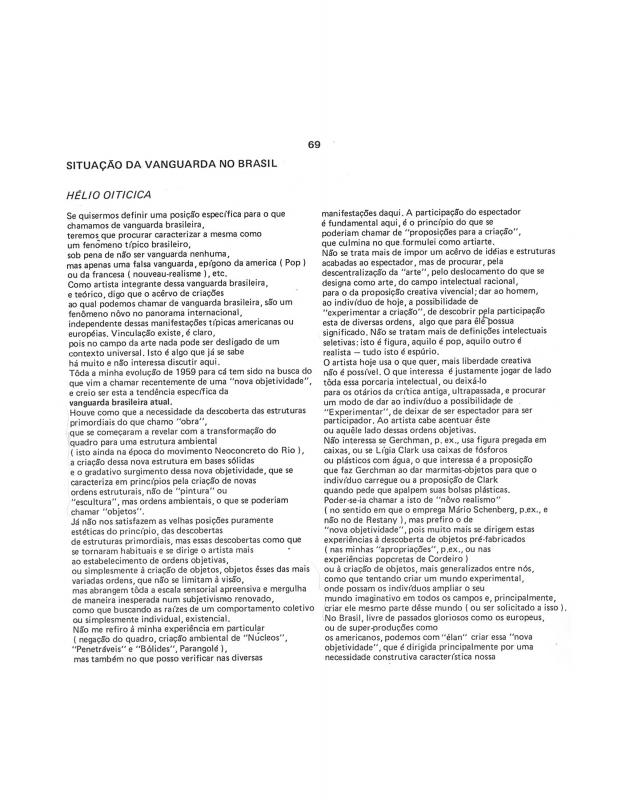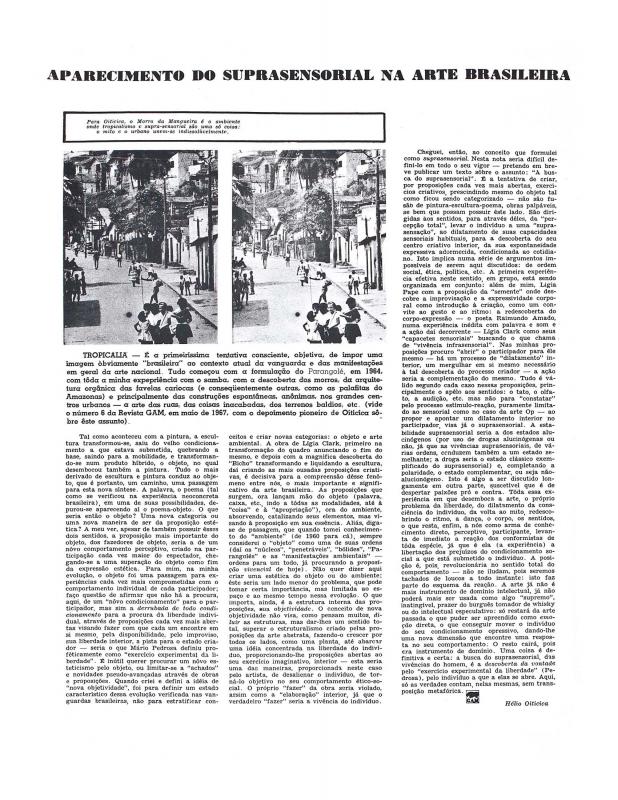This is the text of the introduction to Vanguarda Brasileira, the exhibition presented at the Reitoria da Universidade Federal de Minas Gerais (Belo Horizonte, August 1966). The list of participating artists includes Rubens Gerchman, Antonio Dias, Pedro Escostéguy, Dileny Campos, Maria do Carmo Secco, Angelo Aquino, Carlos Vergara, and Hélio Oiticica.
A copy of the text (which made no mention of the artists) was presented at the Seminário Propostas 66 (organized by the artist Waldemar Cordeiro (1925–1973) in the auditorium of the Biblioteca Municipal de São Paulo on December 12 to 15, 1966). In this article, the critic Frederico Morais (b. 1936) discusses some of Mário Pedrosa’s ideas about Brazil as “a country condemned to modernity.” He also mentions the national tendency to adopt a “constructive attitude,” and the importance of Oswald de Andrade’s anthropophagus concept. The goal of the Propostas 66 seminar was to present a critical, even operative, review of Brazilian movements associated with “new realism” and Pop Art, from the visual arts to mass media. A wide variety of subjects were explored over the course of four nights. “Situação da vanguarda no Brasil” was the subject for the final session, presided over by the modernist writer Cassiano Ricardo, with the set designer Flávio Império as narrator. The presentation also featured the critic Frederico Morais and the artist Rubens Gerchman.
It should be noted that the “constructive attitude” that Morais refers to was brought up again the following year by Hélio Oiticica in the exhibition Nova Objetividade Brasileira at the MAM-Rio (Museu de Arte Moderna do Rio de Janeiro). [See the ICAA digital archive for the article by Oiticica: “Esquema geral da nova objetividade” (doc. no. 1110372). As complementary reading, see the article that Oiticica presented at Propostas 66: “Situação da vanguarda no Brasil” (doc. no. 1110376). For more examples of Oiticica’s contributions to thinking about art in Brazil in the late 1960s and early 1970s, see the article “Aparecimento do suprasensorial na arte brasileira” (doc. no. 1110620)].



